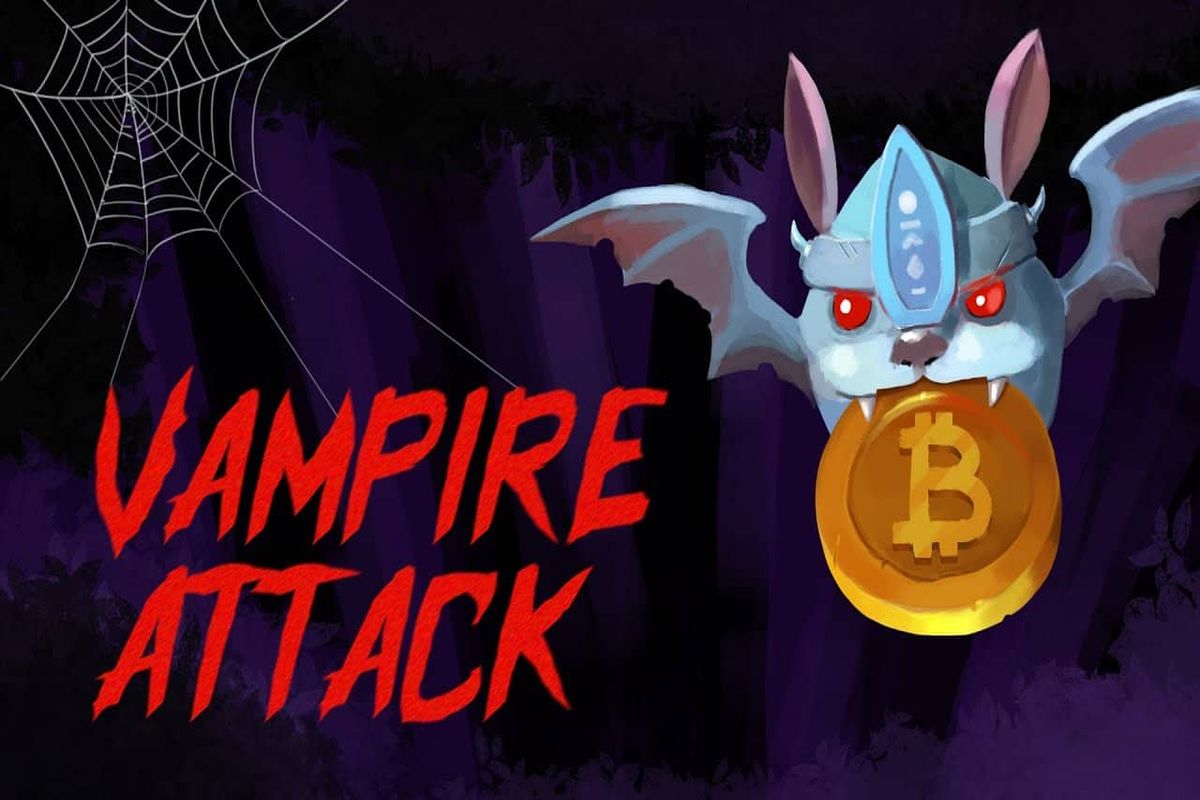Vampire attacks can be aggressive new project launches or less genuine events where illegal actors target established project communities.
A vampire attack in crypto is when a new project – sometimes a fork of an established project – offers better incentives or rewards than the original. The main characteristics of a vampire attack include a new project that aims to outdo another project with quite similar features or a project aiming to steal competitors’ resources and customers who offer essential liquidity.
An attack mostly involves a decentralized finance (DeFi) protocol or decentralized application offering better rates for the same service than a close competitor. The attacks mostly involve mechanisms such as staking rewards, liquidity mining, or lower transaction fees to encourage users to switch from the original project to the new one.
A DeFi vampire attack might result in losing liquidity or even breaking an existing project. This new project “sucks the life” out of the existing project, which is why the events are known as vampire attacks.
These attacks are not essentially scams or inherently malicious. In most cases, they are an aggressive and highly competitive growth strategy common in crypto, with some of the projects surviving the increased competition and others not.
How Does A Vampire Attack Work?
Vampire attacks mostly target projects that rely on users and the liquidity they offer, such as yield farms and exchanges.
Various projects are more likely to experience vampire attacks, including those that rely on users and liquidity. The projects include automated market makers, decentralized exchanges (DEXs), yield farms, and non-fungible token marketplaces.
These attacks can target projects with high liquidity since the pool of capital is attractive to the new project. That is known as liquidity pool exploitation. They may also target established communities that the new project can infiltrate and use for promotion.
The projects with high fees and a lack of innovation are also attractive targets since the new project can undercut the old and offer new incentives and features.
A new project conducting a vampire attack will guarantee that it offers high incentives, such as aggressive marketing and airdrops to the existing project’s community. It will incentivize users to shift their liquidity from the older project and rapidly attempt to increase their liquidity pools and volume. Afterward, it will aim to retain its new users.
For example, in case the attacker is a liquidity provider, it will provide highly competitive yield farming. In case the attacker and its target is a staking service, then it will offer better staking rewards.
Related:How Crypto Scams And Investment Fraud Networks Operate
The Impacts Of A Vampire Attack
Attacks can result in greater competition and encourage projects to innovate and work harder to retain customers. Nonetheless, they can also damage the market and steal user funds.
Vampire attacks in crypto, specifically highly aggressive ones that copy the existing projects closely, can be seen as unethical and unfair. Nonetheless, increased market competition can also serve to weed out projects that are not serving the users with the best incentives and are not innovating but just capturing a market.
During such an attack, an existing project might lose a lot of liquidity that it cannot operate and cease to function. Less severe attacks can minimize the project’s customer base so much that it cannot innovate or compete long-term. To recover from an attack, a project may have to be equally aggressive to win back users.
Competition can guarantee project users get the best deals, preventing the projects from taking advantage of a captive market where the users have little choice, charging some unfair fees, or just taking the realized profit without having to reinvest into better products or services. Vampire attacks can be the start of new projects that can boost yields and incentives available.
On the other hand, excessive competition can see the users move rapidly to new projects that appear attractive on the surface. The new projects can be scams, hacks, or any other illegal schemes where the users lose all their money.
How To Protect Against Crypto Vampire Attacks
Both the existing crypto projects and crypto users can protect themselves against falling victim to vampire attacks.
The simplest way for cryptocurrency projects to protect against less aggressive vampire attacks is to be competitive with healthy incentives, reward the loyal users, and innovative to provide the best features.
There are specific measures a project can use to protect liquidity and users. It includes lock-in periods that prevent users from just withdrawing liquidity after getting incentives, hence guaranteeing their commitment to the platform. Furthermore, liquidity token withdrawal restrictions limit how much the users can withdraw within a particular period, discouraging the mass exits.
Token vesting schedules are designed to gradually distribute rewards, ensuring the steady preservation of platform liquidity. The introduction of dynamic rewards serves to additionally motivate user loyalty and active engagement. By integrating decentralized autonomous organizations (DAOs) or conferring voting rights, there is a deliberate effort to encourage user participation in governance, thereby augmenting overall loyalty levels.
Moreover, community building, security audits, and reputation management strategies boost a project’s appeal and credibility, making it more resistant to competition. Collectively, the tactics reinforce user trust and commitment, which are important for the sustained success of decentralized platforms.
Crypto investors and users can protect themselves against vampire attacks by remaining aware of new project attack methods. For instance, new DEXs offer high incentives in return for liquidity.
Furthermore, savvy investors and crypto users must conduct extensive research and due diligence to guarantee they do not fall victim to scams.









